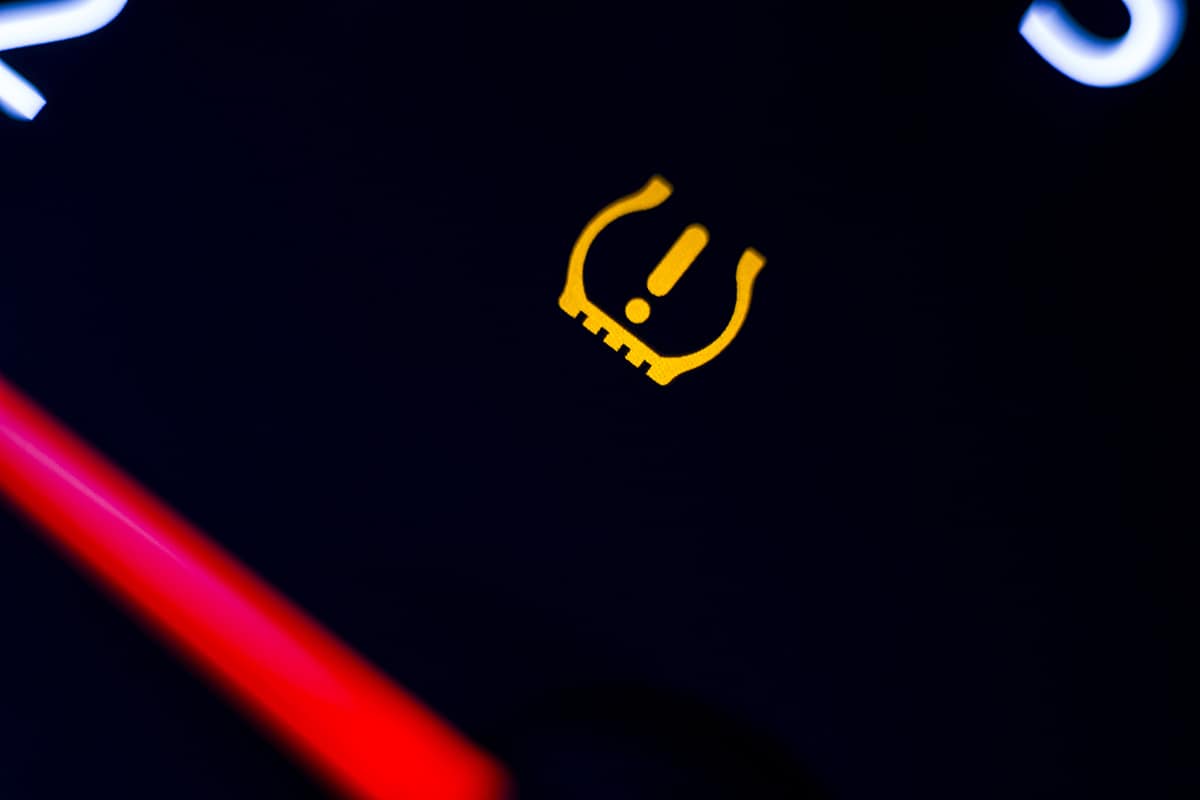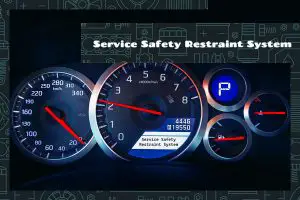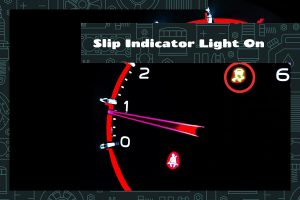Maintaining proper tire pressure is important because it helps to ensure the safety, handling, and fuel efficiency of a vehicle. If you own a Subaru, you should know that select models come with the Tire Pressure Monitoring System (TPMS), which alerts drivers when one or more of the wheels is underinflated.
After checking your Subaru’s tire pressure, you can reset the TPMS system by pressing the red button located just beneath the TPMS icon.
In this guide, I’ll explain what the TPMS system is in more detail, what you need to do when the TPMS icon appears on your dashboard, and what the reset button is for.
What Is Subaru TPMS?

The TPMS (Tire Pressure Monitoring System) consists of sensors that are mounted on each wheel of the vehicle, as well as a dashboard display that shows the status of the system.
The sensors are typically located inside the tire, near the valve stem. They use a small battery to transmit tire pressure data to a receiver located in the vehicle. The receiver processes the data and sends it to the dashboard display, where it is displayed for the driver to see.
The TPMS sensors and receiver are typically located in the vehicle’s electrical system and may be located in the dashboard, under the hood, or in the trunk. The specific location can vary depending on the make and model of the vehicle.
How to Get Rid of TPMS Icon
When the TPMS icon flashes on your dashboard, that means at least one of your tires is underinflated. If you look at the owner’s manual and check the TPMS section, it will tell you that the TPMS sensors will trip when one of the tires is 25% underinflated. For instance, the Forester requires a minimum of 32 PSI for the front and rear tires. If any of the tires is only 24 PSI or lower, the TPMS icon should flash.
The simplest way to get rid of the flashing TPMS icon is to correct the air pressure in your tires. To do this, simply walk around your vehicle and visually inspect the tires. If any of them looks a little flat, inflate it to 32 PSI.
After filling the tires to their appropriate pressure ratings, you will need to turn your vehicle on to check whether the TPMS icon has disappeared. The manual will instruct you to drive around for 2 minutes over 20 mph for the TPMS sensors to get a new pressure reading. If you inflate the tires correctly, this step might not be necessary.
Subaru TPMS Reset Button Location
With all that said, there may be times when no amount of driving will get rid of the TPMS icon, even after double- and triple-checking the pressure in your tires. In such a case, the best course of action would be to hit the TPMS reset button.
If you take a look at the bottom right-hand corner of your instrument panel, you’ll notice a red button located just underneath the TPMS icon. When you press and hold the reset button for 5 seconds or until you hear a beeping sound, that means the TPMS system has been reset, and it will conduct subsequent pressure gauge tests to ensure your tires are properly inflated.
When Should You Reset the TPMS?
When inflating your tires to correct the 25% disparity in current and proper pressure ratings, the flashing TPMS icon should disappear automatically. However, there are other instances where it will be necessary to manually reset the TPMS system by hitting the reset button, which is as follows:
1. When fitting new tires
The TPMS system can be tripped if you replace the tires on your Subaru. This is because the new tires may have a completely different pressure reading from the old tires. Resetting the TPMS system by pressing the red button should shut off the flashing icon.
2. After rotating the tires
Similar to the previous scenario, rotating your tires will involve removing the tires and fitting them back into place. This removal process may throw the sensors out of whack until they’ve been reset.
3. When the TPMS icon remains on
The TPMS system in Subarus is designed to blink for 60 seconds if it notices irregularities in tire pressure readings. After 60 seconds, the icon will flash continuously if there are irregularities in tire pressure or the TPMS system itself. If this is the case, press the reset button and wait another 60 seconds to check whether the icon turns off.
Why Does Your Tire Deflate Over Time?

There are several reasons why your Subaru’s tires may become deflated over time. Let’s see what they are down below.
1. Physical damage
One of the first things you should look for is physical damage to the tire, the valve stem, or the wheel. A tiny puncture can cause the tire to lose pressure over time. If your tire loses too much pressure in a short timeframe, there’s a good chance that something needs to be fixed or replaced entirely.
2. Temperature
Believe it or not, changes in temperature can affect the pressure reading of your tires. If you live in a particularly cold part of the world, you should know that every 10°F drop in temperature will cause a loss of roughly 2% of pressure. Conversely, if the temperature increases by 10°F, there will be about 2% more pressure in your tires.
If it’s still early in the morning, the TPMS sensor may be giving you false readings based on the change in temperature. So, you should get a tire pressure gauge to determine whether or not the flashing TPMS icon was caused by underinflated tires.
3. Osmosis
Without getting too technical, osmosis or permeation—the ability of air to exit the structure of a rubber tire—can lead to a loss of between 1 and 3 PSI per month, with the exact rate of pressure loss depending on the quality of the tire.
Basically, pressure loss is unavoidable, which is why you should constantly check on your tires’ pressures, especially before going on long road trips.






